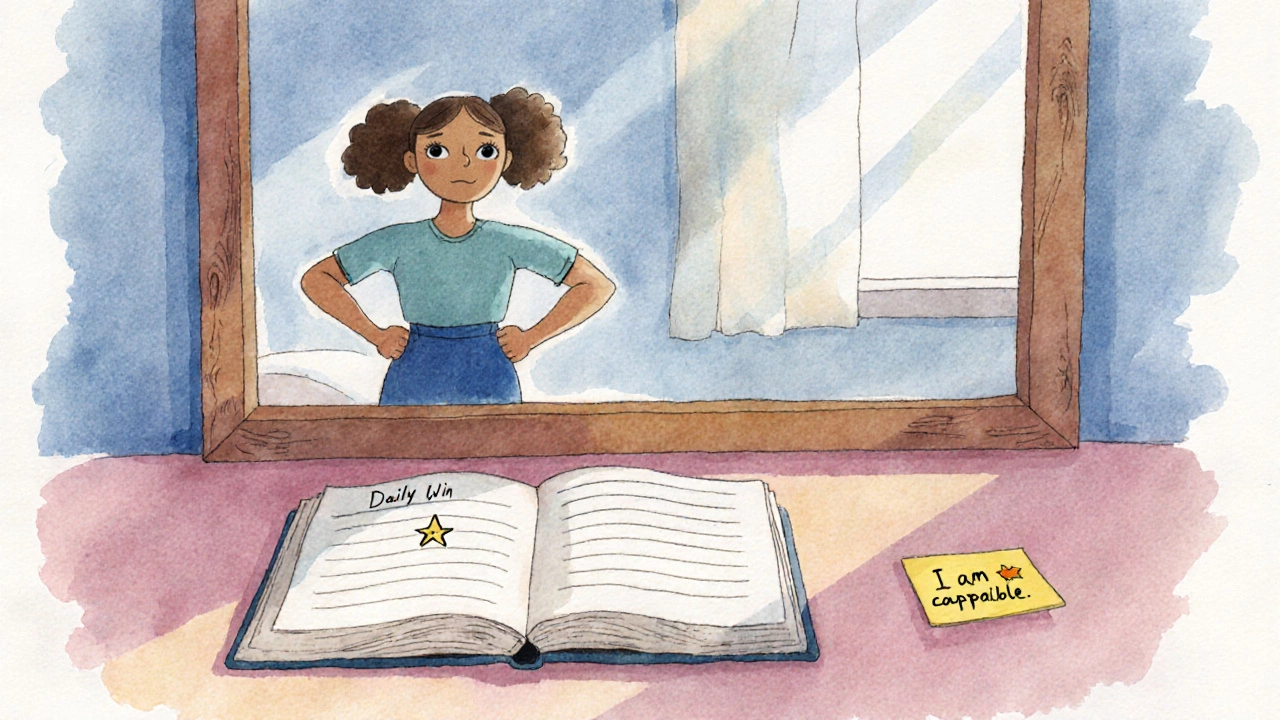How to Be a Bold Girl: Practical Steps to Build Confidence

Boldness Tracker
Daily Boldness Tracker
Log your daily bold actions to build confidence. Each small win contributes to your growth.
Your Boldness Journey
Review your progress. Celebrate every step forward.
When we talk about a Bold Girl is a term that describes a girl who embraces her voice, takes risks, and stands up for herself without fear. Many young women wonder how to develop that level of courage, especially when social expectations often push for modesty. The good news? Boldness is a skill you can practice daily, not an innate trait reserved for a few. Below are proven steps that turn nervousness into confidence and help you own every room you walk into.
Why Being Bold Matters
Boldness isn’t about yelling or ignoring others; it’s about aligning your actions with your values. When you act boldly, you attract opportunities, build stronger relationships, and set a positive example for peers. Studies from the University of Toronto’s psychology department show that students who practice assertive behaviors score 12% higher on leadership assessments.
Build Genuine Confidence
Confidence is the engine behind boldness. Start by celebrating small wins. Each time you speak up, even in a casual conversation, note how it felt and what you learned. Over time, these micro‑victories rewire your brain to expect success.
Confidence is the belief in your ability to achieve desired outcomes, often measured by reduced anxiety and increased willingness to take on challenges. To strengthen it, try the "power pose" technique for two minutes before important events, and pair it with a mantra like, “I am capable.”
Develop Assertiveness
Assertiveness means expressing your thoughts and needs clearly while respecting others. It differs from aggression, which dismisses others’ feelings.
Assertiveness refers to the skill of communicating desires directly and respectfully, leading to healthier interpersonal dynamics. Practice using "I" statements: "I feel... when... because..." This structure reduces defensiveness and keeps the focus on your experience.

Master Body Language
What you say is amplified by how you look. Open shoulders, eye contact, and a steady voice signal confidence.
Body Language includes non‑verbal cues like posture, gestures, and facial expressions that convey emotions and intentions. Mirror the posture of people you admire for a minute during conversations; research shows mirroring builds rapport instantly.
Set Personal Boundaries
Bold girls protect their time and energy. Identify what feels uncomfortable and practice saying "no" without over‑explaining.
Personal Boundaries are the limits you establish to safeguard your emotional and physical well‑being, essential for maintaining self‑respect. Write down three non‑negotiables (e.g., no after‑school work on weekends) and communicate them clearly to friends and family.
Find a Supportive Community & Role Models
No one becomes bold in isolation. Surround yourself with people who uplift you and challenge you to grow.
Supportive Community is a network of individuals who provide encouragement, constructive feedback, and shared resources, fostering personal development. Join clubs, online forums, or local meet‑ups focused on leadership or creative expression.
Role Model describes a person whose behavior, achievements, or values you aspire to emulate, serving as a concrete example of boldness. Identify at least two women-whether a teacher, athlete, or public figure-who embody the traits you seek, and study their habits.

Quick Checklist: Steps to Become a Bold Girl
- Celebrate a daily win and journal the feeling.
- Practice a power pose before any high‑stakes situation.
- Use "I" statements in conflicts.
- Maintain eye contact and open posture.
- Write three personal boundaries and share them.
- Join a community group that aligns with your passions.
- Pick two role models and copy one habit each week.
Introverted vs Bold Traits
| Aspect | Introverted Tendency | Bold Trait |
|---|---|---|
| Speaking in groups | Speaks only when asked | Volunteers ideas proactively |
| Decision making | Seeks extensive consensus | Acts after quick, informed assessment |
| Risk perception | Avoids unfamiliar situations | Embraces calculated risks |
| Boundary setting | Often says yes to avoid conflict | Clearly states limits early |
Remember, becoming a bold girl doesn’t require abandoning your natural temperament. It’s about adding assertive tools to your existing personality toolbox.
Frequently Asked Questions
How can I start being bold if I’m naturally shy?
Begin with micro‑actions: smile at a stranger, ask a simple question, or share a short comment in class. Each tiny step stretches your comfort zone, making larger bold moves feel less intimidating.
Is boldness the same as being aggressive?
No. Boldness respects others while standing up for yourself. Aggression pushes your agenda without regard for others’ feelings. Use "I" statements and active listening to stay bold but kind.
What if my friends label me as “too bold”?
Ask for specific feedback. Sometimes the perception comes from misunderstanding. Clarify your intentions, and adjust delivery without compromising your core values.
Can I be bold online as well as offline?
Absolutely. Share authentic opinions, comment constructively, and set digital boundaries (e.g., unfollow toxic accounts). Online boldness mirrors offline confidence when you stay true to your voice.
How do I maintain boldness during setbacks?
Reframe setbacks as data points. Ask, “What did I learn?” and adjust your approach. Keeping a growth‑mindset journal helps you see failures as stepping stones rather than roadblocks.